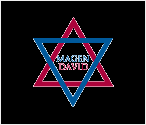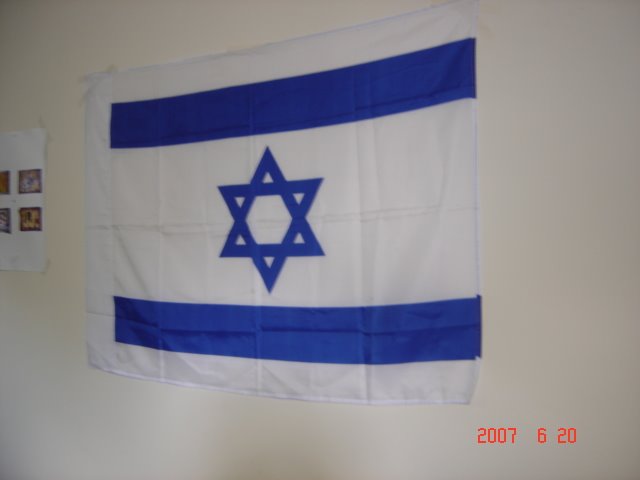Edited by Elizabeth Fried
In Hebrew, the word for man - "ish" - and the word for woman - "isha" - are each written with three letters. Two of the letters in each word - "aleph" & "shin" - are identical. The remaining two letters "hey" & "yud" - together represent G-d's name. Thus, the Talmud explains that when a man and woman live together harmoniously they invite G-d's presence into their marriage. In Judaism, since marital love is considered holy, a wedding is an occasion of sacred and supreme importance. For this reason, a Jewish marriage ceremony is given the Hebrew name "kiddushin", which means consecration or sanctification.
Throughout Jewish history and in diverse communities around the world to this day, the marriage ceremony plays a unique and revered role in Jewish life. The central image of the marriage ceremony - the Jewish bride - pervades every Jewish community around the world. A bride's appearance under the chupa, physically transformed by the gown she wears and spiritually transformed by the holiness of her marriage, renews our understanding of the beauty that is unique to each Jewish woman. From the Garden of Eden to this day, the bride occupies an eternal moment in Jewish tradition. She remains elegantly poised at the crossroads between fantasy and reality, between past and present, between heaven and earth.
The first Jewish wedding took place in the Garden of Eden, between Adam and Eve. Unlike any ceremony as we know it, this marriage laid the spiritual foundation for Jewish marriages of all time. According to the Torah, Adam felt unfulfilled in Paradise, without a partner to help him accomplish his mission in this world. He asked G-d for a wife and, in response, G-d put Adam to sleep and created Eve from one of Adam's ribs. Adam and Eve, the first bridal couple, were profoundly connected to G-d and to one another. Our sages tell us that Adam and Eve were on such a high spiritual level that, when they looked at each other, they saw only the glow of the other's soul. The depth of their relationship tells us that a Jewish husband and wife have the potential for a meaningful, everlasting partnership. This partnership, nurtured by the wisdom and structure of Torah, remains the foundation for every Jewish marriage.
The first marriage of which there is any record took place between Avraham's son Yitzchok and his bride Rivka. The tradition of the matchmaker originates in this story, with Eleizer, trusted servant of Avraham, who sets out in search of a suitable wife for his master's son. Eliezer journeys to Avraham's homeland and stations himself at the town well, where all of the eligible girls gather daily to draw water. Eliezer asks for Divine assistance in choosing the right woman and, with the help of heaven, he finds Rivka. To this day it is said that all marriages are made in heaven. As a bride, Rivka was an example for all time of feminine modesty. The Torah relates that, upon first meeting Yitzchok in the Israeli dessert, she veiled her face. Rivka's veil would also have served to cover her hair, once she married. The Torah - specifically the Book of Isaiah - discusses women's head coverings. A husband, according to this source, is legally bound to provide his wife with basic necessities such as food, shelter and - believe it or not - a headdress! Today, married Jewish women have found many alternatives to the veil. In fact, some of the most trend-setting hats around are worn with great flair by Jewish women who preserve and update the tradition originated by our Biblical Matriarch, Rivka.
Next to the ancient customs that have been transmitted from the Biblical era, Sephardic wedding rituals are some of the most exotic and ritually fascinating around. The "henna" ceremony, for example, takes place in the home of the bride on the evening before her wedding, as symbolic prevention against the "evil eye". All present on this occasion have their faces, hands and feet stained yellow or reddish-orange. As part of the ritual, a variety of figures are marked out on the skin with a needle, and the henna - which is powdered then mixed with water into a paste - is worked in and brings the design to life. In the Sephardic tradition, the families of the bride and groom exchange henna paste, which is then spread on the ring fingers and feet of the couple to signify their upcoming union and encourage fertility.
Another Sephardic bridal tour de force is the Yemenite wedding gown. It is a striking, almost architectural, example of how bridal costume can express on a physical level, the unique place that marriage holds in the spiritual growth of a Jewish woman. In the Yemenite tradition, marriage was the most important event in a Jewish girl's life, often taking place even before puberty. The gown was put together in pieces, partly furnished by the bride herself and partly by a specialist in the area of bridal dressmaking. A major element of this elaborate ensemble is the coatdress of sumptuous gold brocade. It is worn with trousers of red silk, decorated with embroidered star motifs of a distinctly Jewish pattern. The headwear consists of a tall pearl-embroidered triangle, framed by a garland of fresh flowers and branches of rue, believed to ward off the evil eye. The jewelry includes lavish ear hangings suspended from the headdress and across the chest, which is itself draped wit h necklaces of silver and coral beads, pearls, amulet cases and silver bells. The arms are covered with filagree bracelets lined up in a specific order, while the fingers are covered with rings made by Yemenite silversmiths renowned for their craft.
The Jewish wedding as most of us know it became well defined in fifteenth century Europe, where weddings usually took place in shul on Friday morning, so that on Shabbos the next day everyone would be at leisure to celebrate. The ceremony would begin as the couple proceeded to the chupa, where they would stand under the shelter of G-d's presence and under the symbolic roof of the new home they were to establish. Today, the bride and groom are often escorted to the chupa separately. Then as now, the groom places a ring on the bride's right index finger. Seven bridal blessings are recited over a cup of wine and the couple drinks from the glass as a reminder that, henceforth, they share the same cup in life, whatever it may bring. Finally, the bridegroom breaks the glass underfoot, to commemorate the destruction of the Temple in Jerusalem and as a reminder that life in this worldis transitory. The congratulatory "mazel tov" that follows, and the custom of strewing the couple with rice are reminiscent of ancient rituals in which the bride was scattered with grain, nuts and fruits to insure a happy, fertile marriage.
Also in Europe, prior to the twentieth century, Jewish girls rarely left the house before marriage and most well to do parents enlisted a matchmaker to help them find a suitable husband for their daughters. A family sought a groom who was steeped in Torah, as the study of Torah was considered a prized and noble pursuit. The matchmaker often knew of potential candidates who lived beyond the family's circle of acquaintances in the neighborhood. Many marriages were arranged before birth: however, the Jewish woman always had what we might refer to today as a "right of first refusal" or "veto power" upon meeting her intended. The matchmaker's participation in marriage gave rise to a rich body of folklore. One tale tells of a matchmaker who took a young man to visit the family of a prospective bride. On leaving, the matchmaker said, "Didn't I tell you? What a great family! And so wealthy! Did you see the beautiful silverware on the table?" The young man replied, "Maybe they bor rowed it to impress me." "Nonsense," said the matchmaker. "Who would lend those thieves anything!"
On the eve of a new millennium, the Jewish wedding ceremony has been updated in many different ways, yet the heart and soul of its rituals still persist. To this day, each Jewish marriage sanctifies the union of husband and wife, in the same way that the Nation of Israel was consecrated to G-d when they accepted the Torah at Mount Sinai. The bride and groom stand divinely protected under the chupa, as they dedicate their new life together, blessed by their families and friends. The wedding is an acknowledged turning point in their lives, an exciting new beginning, a voyage into the unknown and a time when the present steps aside in deference to the future. The Jewish bride of today reminds us, dressed as she is in pure white, that marriage is about renewal, about the simplicity of true love and about creating more space in our lives for others and for G-d. Every bridal gown is a tapestry of hopes and dreams on the threshold of reality. Each and every bride floats towards the chupa, in an eternal moment embracing all brides that have come and all that are to be.
The bride of 1999 looks different from her predecessors, but she like the others remains an "Aishet Chayil", the eternal woman of valor whose praises are sung every Friday night on Shabbat. The Jewish bride of the nineties is still the inspired matriarch of her home and family - a force for change when need be and a voice of encouragement when change seems impossible. She and future brides, will always proceed to the chupa, dressed like queens, facing eternity and inspiring us to follow.
Andre Moshe-Pereira, Presidente Kehillah Or Ahayim




